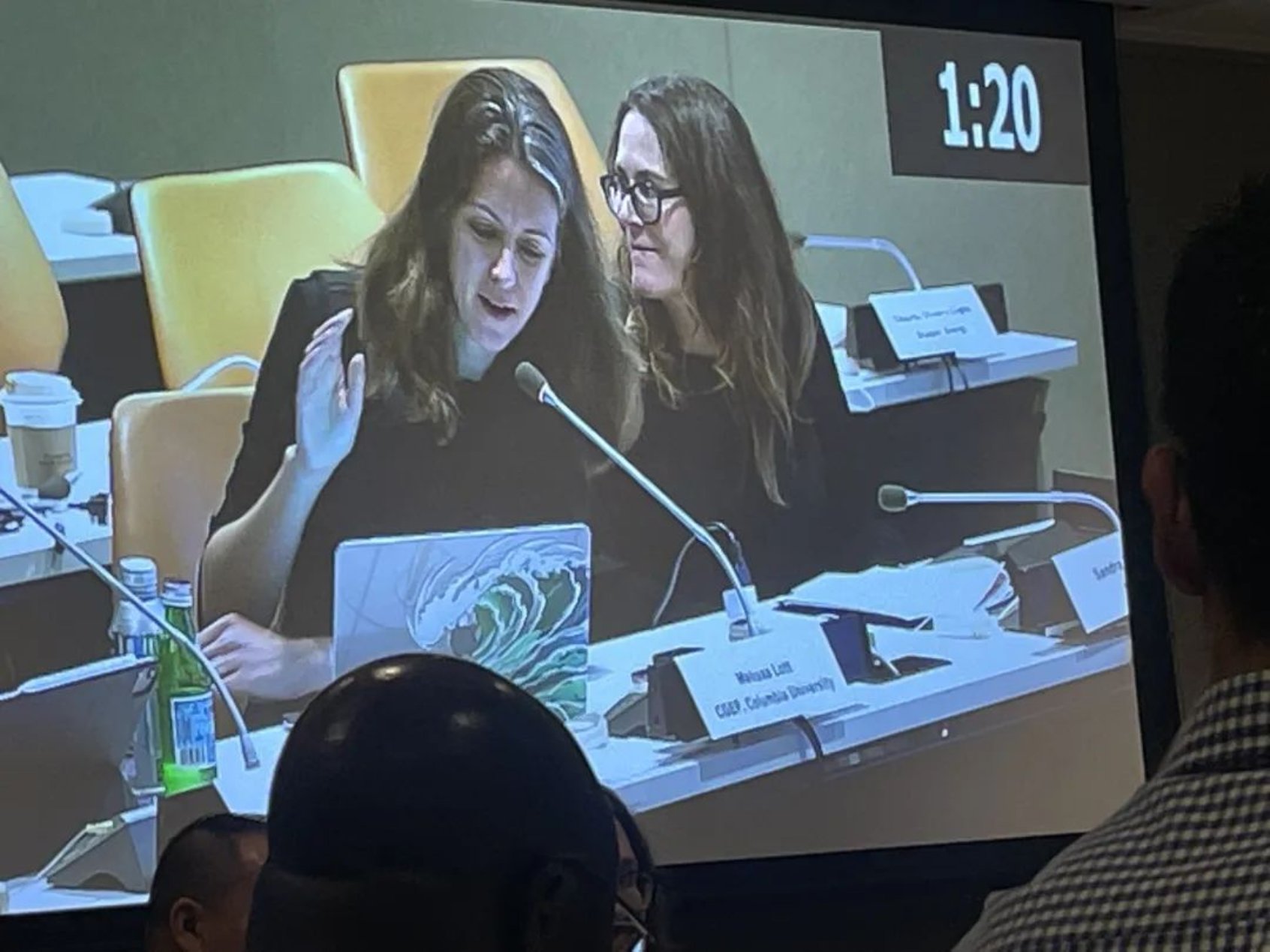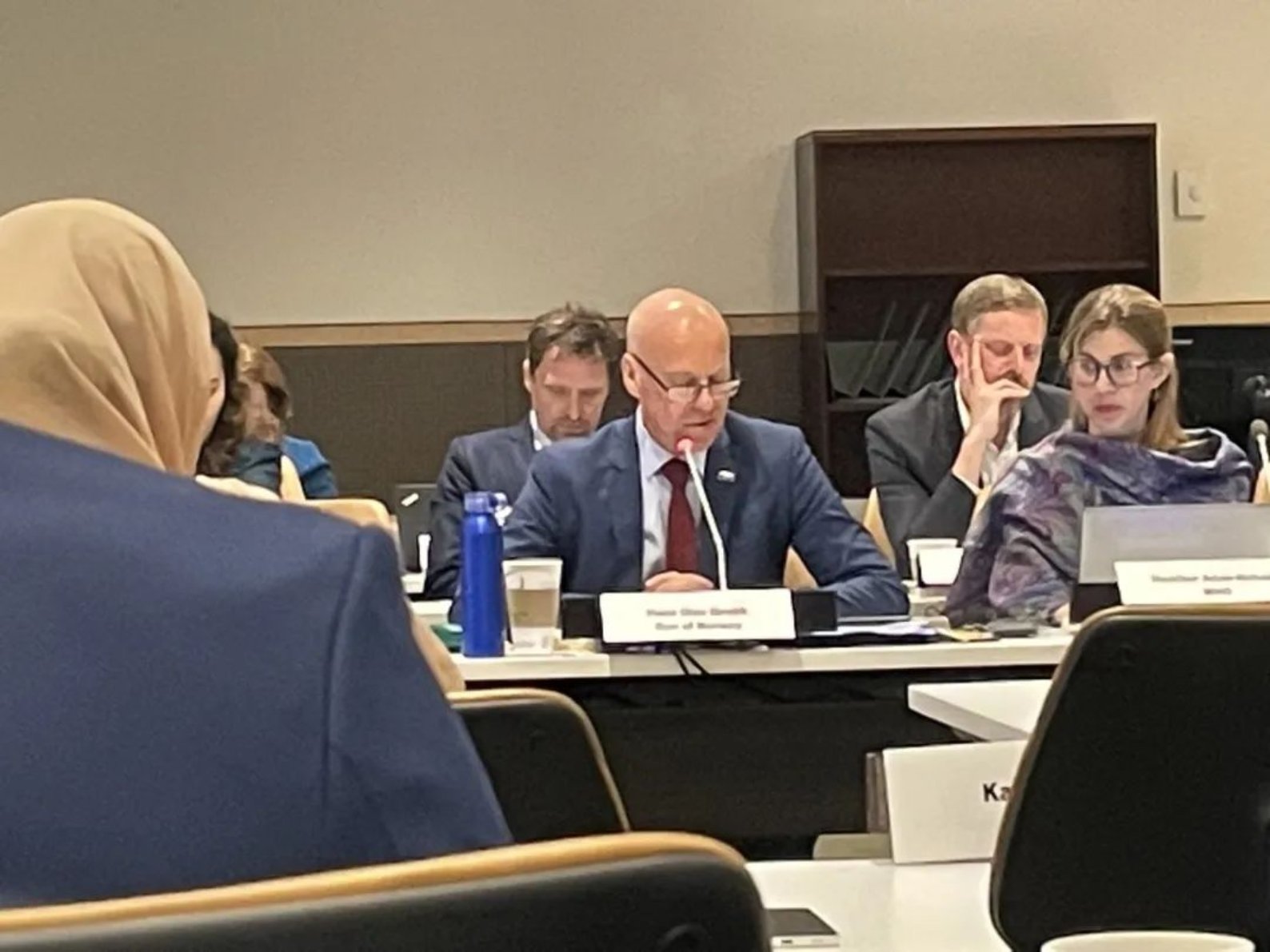新闻动态
许勤华教授受邀参加联合国总部可持续发展高级别政治对话
近期,中国人民大学国家发展与战略研究院副院长、欧亚研究院执行院长、国际关系学院国际能源战略研究中心主任许勤华教授,受邀参加联合国总部可持续发展高级别政治对话,提出重要建议。
Suggestions for SDG 7 of HLPF (High-Level Political Forum)UN Headquarter, New York 11-12/May, 2023
XU Qinhua

Energy Security to energy safety itself is an innovative endeavor for the whole world, the definition has been redefined from security to safety is not only the caring for the balance between the human being with the nature, but also the attention of human being’s convenience e.g we are caring for the more safety, which means the balance among the peoples based on different nation and background; and the balance between the system between the human-social system and the natural one. The balance we call as the Ecological Civilization. To lots of extent, we are going through with the SDG while we are constructing the Global Ecological Civilization.

The SDG 7 “the affordable and clean energy” is a big challenge for the gaps of geographies, knowledge and understanding. The traditional concept of affordable energy to support the sustainable economic development is not obsolete, but has been upgrading all through the time since the UN proposed the SDG 2030 with 17 goals in 2015 formally and has been leading more than 201 nations and regions in the world to be following, including the battle for the climate change and other common actions under the UN cooperative framework.
As the target has become more and more challenging, therefore, multiple-level international cooperation under the leadership of the UN towards to the governance of energy, environment and climate change also has become more and more important. SDG 2030 is the newest thing in the human civilization history, which means all nations’ inputs have been and will be very cherished, by the means of the experiences especially those best practices and also the teachings shared among the countries, which is called as the “A Shared Human Being Future ” under three pillars of “Global Civilization Initiative”, ”Global Security Initiative” and “Global Development Initiative”.

Enriched by the wisdom of Chinese thousands’ year long history, in answering the questions today: 1. Where do we stand on SDG7? Opportunities and Challenges? 2. How can we achieve SDG7? Mobilizing Partnerships and Taking Actions. 3. How can we strenthen global cooperation on SDG7? There are several suggestions demonstrated here by me as the followings :
Firstly, the more the better “education”. Let everybody be involved into this SDG career, as the individual of the society is the base for realizing the 17 goals of the SDG, and the linkage among the 17 goals, in which education is among them plays key role especially the high education.
Secondly, the more the better the direct and transparent information mechanism for decreasing the huge possible wastes and misunderstandings, which might increase the costs happened to the trading and the governance among different institutions.
Thirdly, As energy matters a lot, much more broader than even the climate change issue, in case of the “sudden incidents” and other geographical emergences, the UN needs to set up some sort of pre-cautious mechanism to help stop the losts and in oder not to postponed the goals to be reached as we have seen lots suffered already by the world and therefore the UN Secretay-in-general has issued the “saving action”.
The fourth is as we are carefully scanning over the possible risks as the project of “Low- Carbon Transition Pathway of Coal Power under China’s Carbon Neutrality” from Stranded Assets and Financial Risks undertaked by our RUC research team. Energy transition not only means the joblessness and also lots of assets depreciations and unstable investments. This for China, a country of more than 1.4 billion population takes 30 to 40 years to complete the ambitious workload which the developed countries spent almost 70 to 80 years to transit, means huge self- revolution and endeavor from inside, to realize the 3060 goal.
The fifth, the more the better diversified capital sources, using the PPP (Public and Private Partnership) business model to prevent the possilbe decreased public international investments from leading to the postpone of the goals realization. In 2014, we-RUC suggested in the APEC Leaders’s Declaration” the PPP to support the APEC infrastruction construction”, which recieved pretty positive responses from the governments and societies. The way can also be applied into the SDG7 realization.
All in all, an energy compact is of priority and strongly suggested by me today. We cannot make a competition among different sorts of energy and all levels of governing mechanisms. We do need to welcome all the means of solutions from each member of the UN. We need to set up a Global Clean Energy Cooperation Partnership Network under the UN for the SDG7 as soon as possible for scaling up the public pools of talents, projects, capitals, technologies and policies, even the opportunities and crisis.
The HLPF is the central United Nations platform for the follow-up and review of the 2030 Agenda for Sustainable Development and the Sustainable Development Goals (SDGS) at the global high level. Marking the mid-point of the 2030 Agenda, the 2023 HLPF will include an in-depth review of Sustainable Development 7 on affordable and clean energy.
